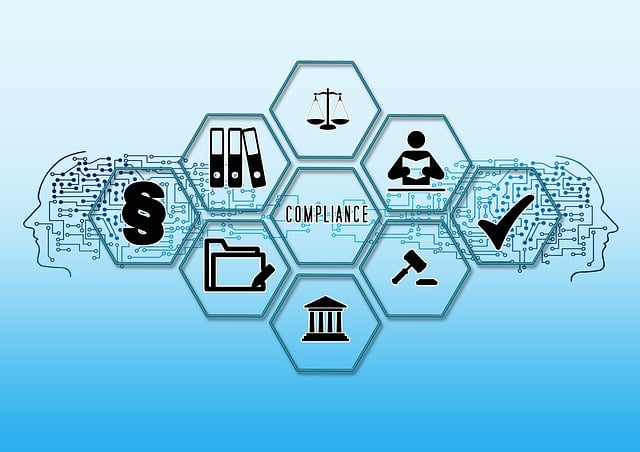This text explores the Select DOT Compliance regulations vital for the US trucking industry, emphasizing safety and efficiency. It highlights key aspects like vehicle maintenance, driver health, hours-of-service rules, and record-keeping, while addressing unique requirements for hazardous material (HM) and passenger carriers. To ensure continuous compliance, companies should integrate training, audits, inspections, and technology into their operations, adapt to evolving regulations, and consider expert consultants. The future of Select DOT Compliance includes a focus on international trade and technological advancements like digitalization.
“Unraveling the complexities of DOT regulations? This comprehensive guide offers expert insights for businesses aiming optimal Select DOT Compliance. From understanding core regulations to industry-specific requirements, we demystify key components for adherence. Learn best practices to maintain consistent compliance and avoid common pitfalls in implementation. Additionally, explore future trends shaping DOT landscape, ensuring your organization stays ahead. Dive into this essential resource for navigating the world of DOT regulations.”
- Understanding DOT Regulations: A Comprehensive Overview
- Key Components of DOT Compliance for Different Industries
- Best Practices for Ensuring Continuous DOT Adherence
- Common Mistakes to Avoid in DOT Selection and Implementation
- The Future of DOT Regulations: Trends and Preparations
Understanding DOT Regulations: A Comprehensive Overview

Understanding DOT Regulations: A Comprehensive Overview
The Department of Transportation (DOT) regulations are a cornerstone of the US transportation system, ensuring safety and efficiency across various modes of transport. For the trucking industry, these regulations are particularly vital, encompassing everything from vehicle maintenance to driver health and wellness. Compliance with DOT standards not only ensures the well-being of truck drivers but also promotes smooth operations for fleet management software solutions. By adhering to these guidelines, carriers can minimize risks, reduce accidents, and foster a culture of responsible trucking.
This comprehensive overview aims to demystify the various facets of DOT compliance, including specific safety regulations for trucking industry stakeholders. It highlights key areas such as hours-of-service rules, vehicle inspections, and record-keeping requirements. By providing expert guidance on select DOT compliance aspects, this article equips readers with the knowledge needed to navigate these complex regulations effectively, ultimately contributing to a safer and more sustainable trucking environment.
Key Components of DOT Compliance for Different Industries

The key components of DOT (Department of Transportation) compliance vary significantly across different industries, but several critical elements are universal. First and foremost, understanding and adhering to federal motor carrier safety administration (FMCSA) guidelines is paramount for all carriers. This includes maintaining up-to-date records, ensuring proper vehicle maintenance, and providing comprehensive safety training for truck drivers. Regulatory compliance for carriers involves rigorous documentation and reporting procedures to demonstrate adherence to safety standards.
In addition to these foundational practices, specific industries may have unique requirements. For instance, hazardous material (HM) carriers must strictly follow HM regulations, which encompass specialized training, packaging, labeling, and emergency response planning. Similarly, passenger carriers face distinct compliance challenges, focusing on passenger safety, vehicle inspections, and operator qualifications. By integrating these diverse elements into their operational frameworks, businesses can achieve robust DOT compliance, enhancing both safety and regulatory standing.
Best Practices for Ensuring Continuous DOT Adherence

To ensure continuous DOT (Department of Transportation) adherence, companies should embrace best practices that integrate select DOT compliance into their core operations. This includes implementing robust training programs for employees to foster a culture of safety and understanding of freight carrier safety standards. Regular audits and inspections are crucial tools to identify and rectify any non-compliance issues promptly. Utilizing transportation safety technology can significantly enhance these processes, offering real-time data and insights that facilitate proactive compliance management.
Moreover, integrating supply chain security measures into your logistics strategy is essential for maintaining DOT adherence. This involves leveraging advanced tracking systems, secure communication channels, and comprehensive risk assessment protocols to safeguard cargo movements. By adopting these practices, companies not only meet the stringent DOT regulations but also contribute to the overall enhancement of transportation safety and efficiency in their operations.
Common Mistakes to Avoid in DOT Selection and Implementation

When it comes to selecting and implementing Department of Transportation (DOT) regulations, many businesses in the freight transport industry make avoidable mistakes that can lead to costly consequences. One of the most common errors is overlooking the specific needs and unique characteristics of their operations. Every company has its own set of requirements, and a one-size-fits-all approach to DOT compliance will rarely be effective. For instance, a business specializing in local deliveries may have different considerations compared to a company managing long-haul truck routes.
Another critical mistake is failing to stay updated with the ever-changing DOT regulations. The freight transport industry is subject to frequent updates and revisions, especially regarding safety standards, medical card renewal processes, and best practices. Engaging with reputable DOT compliance consulting services can help businesses navigate these complexities. By seeking expert guidance, companies can avoid costly penalties and ensure they remain in full compliance with the latest DOT requirements, ultimately enhancing their operational efficiency and reputation within the industry.
The Future of DOT Regulations: Trends and Preparations

The Department of Transportation (DOT) regulations are constantly evolving to meet the changing demands of global mobility and commerce. As we look ahead, several trends shape the future of DOT compliance, demanding that businesses stay agile and proactive. One prominent trend is the increasing focus on international trade compliance, driven by the rise in cross-border shipping and the complexity of global supply chains. This requires a deeper understanding of varying national regulations, such as those related to dot hazardous material guidelines, to ensure smooth and compliant operations worldwide.
Additionally, technological advancements are revolutionizing DOT compliance. Digitalization offers efficient tracking systems for shipments, real-time data sharing, and streamlined documentation processes. Businesses adopting these innovations can enhance their ability to manage compliance requirements, improve safety, and reduce operational costs. With the ongoing digital transformation, investing in comprehensive DOT compliance training, including international trade compliance training, is essential for keeping up with industry standards and maintaining a competitive edge in today’s global marketplace.
In navigating the intricate world of DOT regulations, understanding and adhering to key guidelines is paramount for businesses across industries. This article has provided a comprehensive overview, highlighting essential components of compliance, best practices, and common pitfalls to avoid. By embracing the future trends outlined, organizations can ensure they remain DOT compliant while staying ahead of evolving standards. Selecting the right DOT compliance strategies is crucial for fostering efficiency, safety, and continuous improvement.
